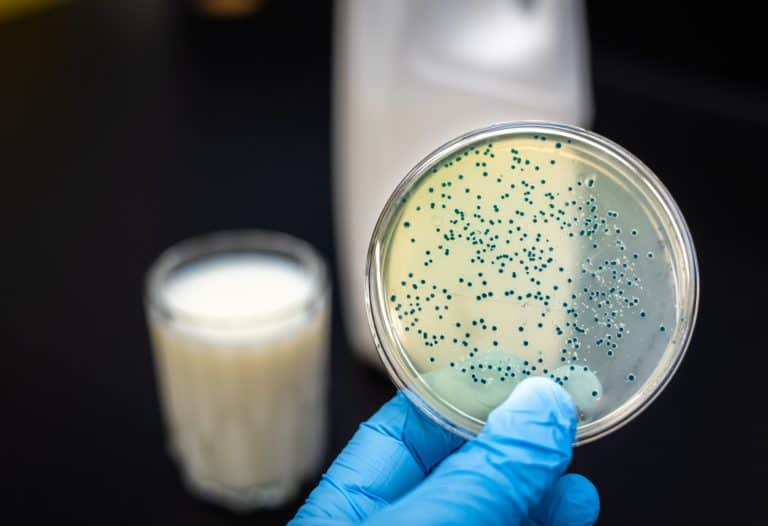So you may ask, why this topic? First, you can’t measure what you don’t know. If we feed milk that may be contaminated with bacteria, we could potentially set our calves up for severe scour days or even death.
We need to measure the amount of bacteria that made it through the pasteurization (PA) cycle as pasteurization is not sterilization. When we PA, we reduce the colony forming units (cfu).
A common practice is to put waste milk in to 5 gallon pails in the parlor as the cows are being milked. When those pails have residual levels of bacteria left behind from previous milking’s, even after washing them, we can have a greater chance for that milk to grow bacteria. We know bacteria levels double every 20 minutes in milk above 60 degrees. Many farmers leave that milk in pails in the parlor the duration of the milking.
What we need to do is chill that milk as soon as possible. Plunge a frozen pop bottle of water into the pail of milk or somehow chill the center of the pail. This reduces the replication of bacteria growth. Once we have our milk chilled and or pasteurized, lets take a milk sample and send it off to the lab for bacteria count. We are measuring any live cells that are present in the milk. Request an aerobic plate count, this is a measurement of any live bacteria that made it past PA. If we would request a typical bacteria count (bactoscan), that is a measurement of all bacteria cells both live and dead. We are only concerned about the live cells that made it past PA.
My goal is to help farmers monitor their milk they feed to their calves. Here are some guidelines I use when helping producers monitor their milk.
- Take 3 samples of the same batch of milk
- Use the sample bottles that the creamery supplies
- Mark on the bottle: Pre-PA, Post-PA and last calf fed
- Sample the milk with clean gloved hands and clean sample bottle
- Once you have taken the samples, plunge into a cold-water bath
- Freeze any sample you have taken & ship them to the lab
- Ask for an AEROBIC PLATE COUNT (APC)
Not all labs run APC, so confirm what your creamery/vet clinic uses when measuring bacteria loads in milk.
Tips for success:
- Monitor equipment used for collecting milk (colostrum and waste milk) ATPswabbing is a great tool for this. ATP gives you an immediate numerical score within seconds.
- Run samples routinely, once per month- all from the same batch of milk
- Train employees to collect either good saleable milk, high SCC milk or even waste milk, discard any bloody milk or extremely bad mastitis milk.
- If a high number of scour events or death occur, diagnose the event with either a necropsy or fecal sample to help diagnose the occurrence.
- Bottom line is if you measure what you are feeding you can have a better handle on morbidity & mortality rates on your farm. The cleaner the milk you feed your calves the healthier calves you will see.
Any questions or need help with monitoring bacteria loads in your milk contact us at Calf Star!
Minnie

